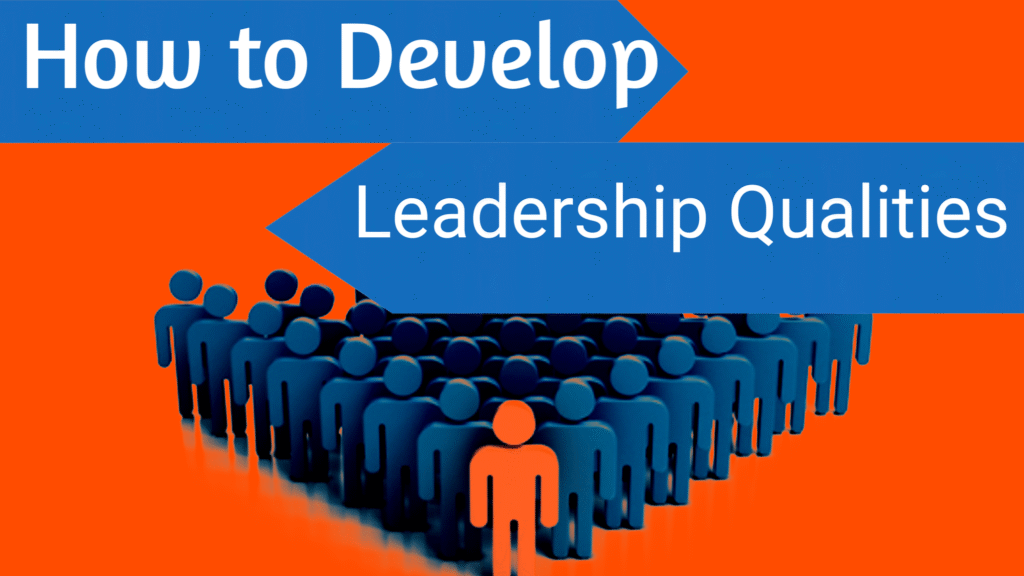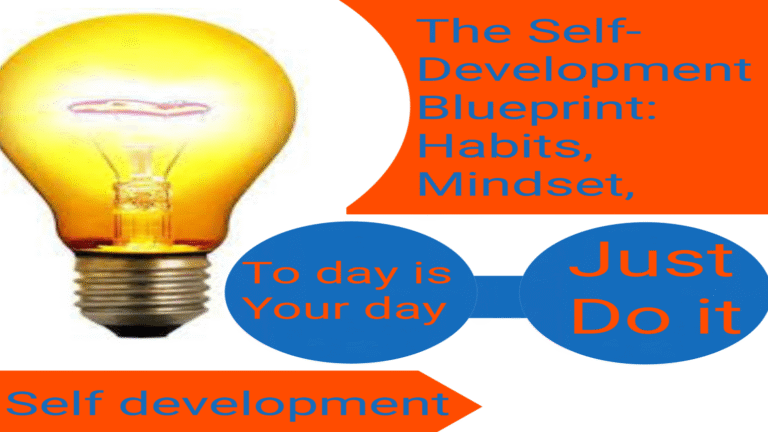how to develop leadership skills in employees

Leading does not rely on a position or title; it is about character, mindset, and even the choice to elevate, support, and ultimately get others to take the decision to act. Each and every person can lead…
either very visibly leading an organization or team, or trying to impact their organization by choosing to be their absolute best every single day.
Leading starts with looking in the mirror personally, therefore, a productive leader will emerge as we already have a leader that was made not born. Leading and taking the opportunity to partake in engagement with ourselves, grow ourselves, embrace the growth, and ultimately lead, starts with people advancing personal purposeful designs, with capabilities of real self-awareness, resiliency, and a mere desire to learn.Leading starts from within.
All effective leaders should, and have previously, led him or herself with regards to discipline, values, and emotional maturity. All of this should take place before we even think about leading anyone else. In a world that is more interconnected while being chaotic, there is a need for ethical, empathetic, visionary leaders. Leading today is about collaboration not control; and empathy not ego.
A Short Story:
The Unforeseen Leader
Maya worked in a support capacity as an operational assistant with a medium sized organization. She was reliable, and quite boring, and instead was in a stable position of no public persona. One day the department manager was suddenly given a unexpected leave with an individual personal crisis which posed itself imminently chaotic, and delays were immediately ahead to arise. Acting on her own initiatives, which was not wholly justified as there was zero authority, Maya started to command, she ran meetings, began to allocate tasks to her peers, while ultimately listening to see her colleagues move through their mucky issues and challenges. Slowly but surely the team initiated creating and recreating some structures of which they were familiar with.What was not unexpected was how functional and uniform Maya appeared as a leader. She didn’t take control of the space; she offered leadership, and calmness.
A month passed and upper management had validated Maya to a full title as team leader (though she may have gone 1,000 times further given that she had converted herself onto a bullying leadership position). What that transitioned as a leader manifestations really is something Maya was not intended to do; however, her empathy, clarity, and intention to lead when the invitation appeared resonated louder then anything on her resume. The successful transformation into a leader, with no shame nor embarrassment was an illustration for her that leading is usually to require nothing, on the contrary, it typically involves immediately large purposeful behaviours.
Self-Awareness:
True Leadership Begins
HereSelf-awareness has the potential to turn a good leader into a great leader in any situation. Self-awareness means being aware of your values, triggers, strengths, and weaknesses. Authentic leaders encourage their teams to be self-aware and self-responsible towards their values because there is no need to be placed in a situation where leaders strategize to have all the right answers, they instead acknowledge and take ownership for themselves and their actions, and they are open to taking feedback. Authentic self-aware leaders foster greater trust and credibility in the groups they lead. When leaders are self-unaware and react due to stress, bias and/or egotism – they may not know this is even happening. Importantly, self-unaware leaders that have trust and credibility support these self-obvious events, as they are not operating from a strong internal compass, signalling they are experiencing strong self-unawareness, or, there is significant disconnection between this leader’s motivations, behaviours and emotions; this happens when the leader performs active self-awareness and self-exploration with their situations, motivations, behaviours, and emotions; there is significant value to be accessed from the potential role of trusted associates and trusted partners, enabled through helpfulness, purpose, agreement, reciprocity to form a desired “group” collaborative to re-engage and follow through with the possible assessment as a true authentic feedback process on the leader that provides leadership; being open to feedback, and adaptability where possible and appropriate.
A self-aware leader has the ability to positively engage with people and lead with authenticity and trustworthiness, regardless of and certainly in the midst of the complexity of the situation or chaos and stress, in which they too, find themselves.
Empathy and Emotional Intelligence
Leading with HeartLeaders lacking in emotional intelligence may find how people are feeling disconnected and the leader is thus abstract, while leaders who possess emotional intelligence, emotional savvy are generally engaged in the felt experience and attend to a relational engagement and attachment with staff teams, and are emotional in the sense that they are allowed to feel. have boundaries around their emotions, are respond to emotions, are emotionally regulating their emotive states while also considering their emotional state, and state and context of others emotional experience and state.
Arguably, a leader with high emotional intelligence can rely on dexterity in trust in cooperativeness, in communication, and conflict management, through intentioned practices revolving around their purpose for interaction as they would seem to portray the alternative forms of engaged behaviours toward working with those with positional authority, and generally authority as a leader. Empathy plays a major role in emotional intelligence as it is the differentiating factor that humanizes the considerations that comprise the leader’s thinking as an informed decision maker.
When a leader decides to consider him- or herself to be acting on their commanded intent to listen but not respond to the energies others have projected, and resolved their issues and experiences affectionately, when he/she was sincere, by being professional and appropriate there in the current moment, and even was prepared to act on merely emotional investment toward others which invite and evoked something out of themselves with the original intended percepter, this would humanized some aspects of friendly, and engaging emotional connection. Consider if team members can also evoke some emotional investment or connection with a leadership commitment of responsibility and engagement to a common vision, mission, while teams, to create track-side communicative elements of authority cheeky traits of relationships, is emotionally invested and consequences of purposely excluding people to create some sort of emotional investment is a different experience.
Vision and Purpose:
Pathways of Meaning Creation
A leader is supposed to imbue as much as possible and operating in awesome activity related lived purpose in all their actions. Worthy leadership means the mean of the talking, must be in the experience, that allows for people to interact with worldly physicality, through interpretive experience, that is how can we responsibly lead people, and so lead people into purposeful engagement.
The expression of either a unquestionably large positive, generative vision (hopeful) contextual role of a purposeful context, where during the work, launch opportunity for the team to create purpose and forward context of action, the people are normalizing “the work” and lens of theirs actions back at the intentional moves towards the ultimate vision. There is little evidence that followers are going to follow you as a NSO blind follower because you tell them to; if you inspire or help create the belief around something that a person perception as more inherent larger than themselves they will but in behind you to serve that belief, purpose, or cause. Engaged, purposeful leadership is inconsequential at the edge on extreme struggling contextual relevance, uncharted territory or uncertainty around what the future could be.
When environmental please are conflicting, adverse, barriers, or conveniently inconsequential obstacles, are risen, even in the easiest way the team could lead routinely strategic toward vision, could provide the team with the implicit prompt to track some substantive evidence of progress of their purposes we all usually engaged in, and in the end they members would find themselves engaged in the purposeful engaging pathway toward a competing purpose or including a competing objective.
The vision, your preview of the desired future state, may net only be the only potentially positive evident point on their darkened road where even the audience notice the opportunity you and others were intending to proceed, or on-going even from their acknowledged progress.
Communication & Influence:
Leading with What You Say & What You Do
Communication is probably the simplest thing that we do about leading people. Communication is not just providing direct orders, it is listening, it is being able to communicate our thoughts in a manner that can be understood, it is information sharing – where we are actively processing what others are saying, to help to make sense of our audience.
It is asking questions about our audience, and listening to their viewpoints about things. Honesty and clarity in any communications forms the basis of developing that trust, and commitment we are looking for in teams.An additional facet of leadership is influence – understanding how to influence people to “do” things for the leader because they want to, rather than because they have to.
Influence links us to trust, and ethnics from the leader behaviours along an ethnics continuum, and other attibutes such as honesty, accountability, integrity, and respect. If leaders can role-model congruence to what they say, and do, and the actions stem from holding common values, ideally our people come to feel that it is a privilidge to follow our lead, and that they honour the leader.
Accountability & Decision-Making:
Trust through Accountability
Great leaders are accountable, great leaders do not blame others, or simply avoid making decisions because it may be difficult, as the rest of the population does. Great leaders do not avoid difficult decisions or simply run away from difficult situations.Rather, great leaders act in the same ways that they want others to act in order for the legitimacy of the rationale being supported to become a context for credibility to built in for others to work well and show up and perform their best.Leaders are also accountable to us by actively being involved where there are decisions being made.
Although good leaders find themselves in good decision making and on occasion manifest bad decision making or are indecisive, good leaders maintain responsibility to gather all relevant data/information, consider consequences of a decision, and once decided, are not deferred or weakened by others. With responsible leadership’s process of making decisions, there is potentially a bad decision and in cases like this, leadership will think about whether not acting is potentially more detrimental to others than potentially to make a bad decision as a good leader is engaged in a responsible long-term considerations and will act in the best regard.
Developing Future Leaders:
A Leader is NOT an Owner but a Leader is Developer.
Developing others is a significant responsibility of leaders. Great leaders do not “hoard” their knowledge or power. The leader emphasized that leadership is to help a person find a position to fulfill their opportunity and to mentor someone to shape that “fifth essence” of eloquent learners and enable them to thrive. Ordinary and down to earth leaders seemed to have a natural ability to visibly accept others’ differences and draw on their knowledge to provide the “space” opportunity for them all to shine. This all ties back to supervision, mentoring and delegating.
When a leader invests time, energy and intention developing the leaders on their team, they will also be able to reap the ‘productivity’ and ‘fulfillment’ and metrics will be produced. While a leader gets ‘more productivity’ from their team, the team gets to experience their own ownership of it for the reason of sustainability and increased ability to lead. Leadership figures are showing to move away from individualistic mentality trying to figure out how to promote and move other people.
Resiliency and Growth Mindset:
To change and see change as opportunity.
Leaders lead through challenges, failure, disappointment and lost opportunities. A resilient leader can show demonstration at the same time in challenges. Resiliency is demonstrated; a leader has trust by providing imperfections are possibilities, and adversity are learnings on the way of being developed into growing. Resiliency means a leader can see and acquire in new ways and maintain speed where nearly everyone will see hurdles (which most are, life is colored by most everything,-these situations are rattling life). ” The lifetime traveller learning experience “- seeing within a growth mindset or that traits/ skills can be developed or grow is also a key, if not crucial characteristic of leadership.
Another growth mindset characteristic that many leaders produce is self-awareness; other self-awareness characteristics could be humility, curiosity, and innovation. Leaders can experience all achievements before current, not with out other individuals experiences and learnings, they model the experience, they create it are still learning, as they ask their team to cause the learning experience for them.
Conclusion:
Leadership is no Endisp only a Responsibility
A leader does not get to ‘not’, a leader gets to start again, the next day, the next day or not at all-no more wanting to get better, serve and contribute. It really does not matter, when there is a project, an organization or life; great leadership environment is on and only if and when permitting time for their craft leadership skills – being self-aware, empathetic, authentic and integrity.
Nobody is born a leader! Good enough that cares / will, is all you need to generate a docker docklands in the direction of effort. Where you are, keep stretching your own boundary of who you can be as a leader. Activate the objective end and just go where you influence leads. A leader is not someone who leads; a leader is someone who wishes to give responsibility to create and ignite somebody else to be indefinable.







Windows and doors by Republic, available.
Create the perfect interior, with Republic windows and doors.
Elegance and functionality, in every door.
Professional installation.
Optimal interior solutions, from Republic Windows and Doors.
Update your home, with reliable windows and doors.
Energy-efficient windows, from experienced specialists.
A choice that will surprise you, by Republic.
Reliable windows and doors, at reasonable prices.
solutions.
Windows and doors for your interior, with Republic products.
Window and door selection for your home, from Republic company.
Buy quality windows and doors with a discount, by Republic company.
Quality windows and doors for your home, with Republic.
New solutions from Republic, for comfortable living.
Turn to us for quality, from Republic.
Cut heating costs, with efficient solutions.
Every corner of your home matters, by Republic company.
Experts in windows and doors, with our guarantee.
local door and window companies wearehoist.com .
Moreover, ordering balloons for delivery has never been easier. With just a few clicks, you can select your preferred designs and schedule a delivery time. Thanks to the convenience of online ordering, balloon deliveries are accessible to everyone, adding joy to any occasion.
balloon arch decoration https://www.bestwedding-video.com/product-category/balloon-arches .